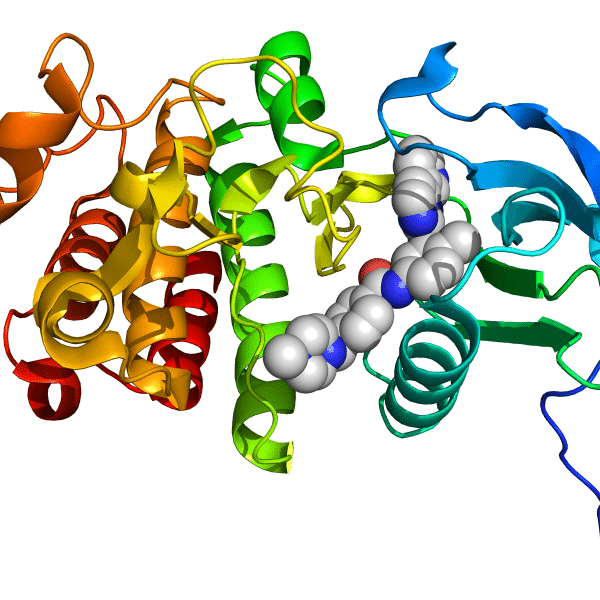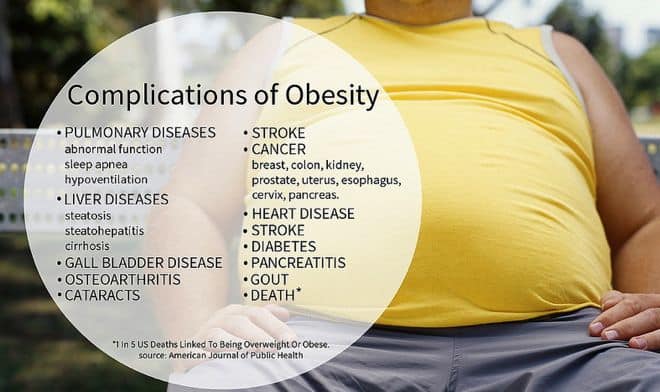Studies suggest the peptidomimetic molecule Adipotide may have pro-apoptotic characteristics and has been suggested to induce weight loss in rhesus monkeys and mice.
The blood supply to the fat cells has been hypothesised to be severed when Adipotide causes these vessels to atrophy and, ultimately, cell death.
Studies suggest the peptidomimetic molecule Adipotide may have pro-apoptotic characteristics and has been suggested to induce weight loss in rhesus monkeys and mice.
The order of its components is CKGGRAKDC-GG-D(KLAKLAK). Research has purported that it may target specific blood arteries that feed white adipose tissue, causing them to undergo apoptosis.
The blood supply to the fat cells has been hypothesised to be severed when Adipotide causes these vessels to atrophy and, ultimately, cell death. Ischemia damage occurs when fat cells do not get enough oxygenated blood. Because this impact cannot be undone, fat cells die, a process known as apoptosis.
As suggested by molecular research, Adipotide may bind to two receptors unique to the blood arteries that feed white adipose tissue. These receptors are stereo-chemically structured. Both prohibitin and ANXA-2 are receptors for this.
Adaptive brown fat thermogenesis appears unaffected by Adipotide because of the tissue specificity of these receptors, which means that it may have no impact on brown adipose tissue.
Due to their small bodies and the fact that their surface area-to-volume ratio promotes high rates of heat loss, brown fat thermogenesis is particularly important for developing organisms. White adipose tissue develops only when energy expenditure is higher than energy consumption.
Adipotide Peptide and Weight
An excess of adipose tissue bulk causes obesity. White adipose tissue is the primary culprit of obesity, according to studies. Since a rise in weight may be attributable to other causes than an increase in adiposity, it is important to note that a rise in body weight alone does not constitute obesity.
An increase in mortality and morbidity rates is linked to obesity. The current methods for determining obesity include densitometry, anthropometry (which measures skinfold thickness), and the Body Mass Index (BMI). An obesity-defining body mass index (BMI) of 30 is accepted.
Research models of obesity are typically involved in associated conditions including cardiovascular disease, cancer, stroke, high blood pressure, high cholesterol, metabolic syndrome, non-insulin-dependent diabetes mellitus, cerebrovascular accidents, heart attacks, and other kinds of cardiovascular disease.
Obesity exacts different impacts on the organism based on placement. Because adipocytes in the abdomen region have higher lipolytic activity than adipocytes in the lower extremities, the increased morbidity associated with abdominal adiposity is thought to be due to this difference.
The vascular/stromal compartment is home to macrophages and preadipocytes, and the lipid-storing adipocytes comprise fatty tissue. Adipose mass rises due to adipose cell hypertrophy caused by elevated lipid accumulation and subsequent hyperplasia. Also indicative of this upsurge are elevated levels of preadipocyte to adipocyte differentiation and many infiltrating macrophages.
A steady blood flow to the fat cells allows them to differentiate and keep their bulk high. Such fatty tissue would be more vulnerable to ischemic damage, triggering apoptotic cascades in the wounded adipocytes and halting differentiation. Thus, adipocytes in white adipose tissue would suffer non-reversible ischemia damage, leading to a decrease in fatty mass, as would a peptidomimetic like Adipotide, research suggests.
Adipotide Peptide and Obesity
“Setback of obesity by targeted ablation of adipose tissue” was the title of a 2004 research by Mikhail G. Kolonin et al., in a peer-reviewed academic publication that published the study’s results. This research aimed to clarify that white adipose tissue vascular bed-focused vascular apoptosis induction may be a potentially effective anti-obesity procedure. In this experiment, mice served as the subjects.
The research used a peptide motif isolate that could specifically target the vasculature of white adipose tissue due to its sequence . An in-vitro phage display was used to identify the peptide motif. As the study suggested, the peptide motif may form an association with prohibitin, a multifunctional membrane protein.
In this way, prohibition was suggested to be a vasculature marker exclusive to white adipose tissue. Adipose tissue mass ablation was also shown by results, which suggested that the pro-apoptotic peptide may successfully target the white adipose tissue vasculature.
Overall, metabolic processes seemed normalised as a result of white fat resorption. The result indicates that the examined peptide motif might lead to the ablation of white fat mass since prohibitin is expressed in the vasculature of white adipose tissue.
The research, “A Peptidomimetic Targeting White Fat Causes Weight Loss and Better Insulin Resistance in Obese Monkeys,” was carried out by Kirstin F. Barnhart et al. in 2011. This research examined the effects of a ligand-directed peptidomimetic on obese monkeys.
Adipotide was another name for the ligand-directed peptidomimetic with the sequence. The research suggested that Adipotide may have caused the monkeys’ white adipose tissue vasculature to undergo apoptosis, leading to fast weight reduction and better insulin function.
Licensed professionals interested in research peptides for sale may navigate the Core Peptides website for the highest quality research compounds. Please note that none of the substances mentioned in this article have been approved for human consumption.















